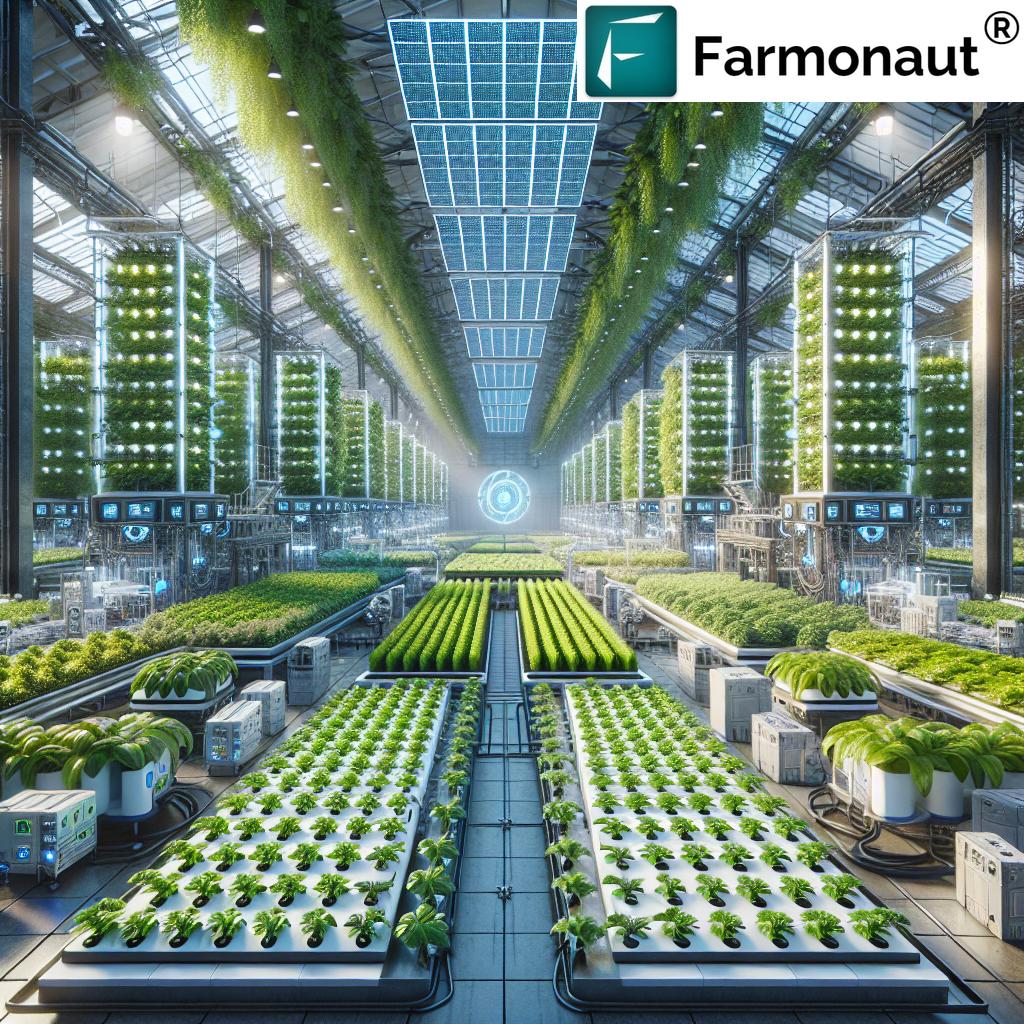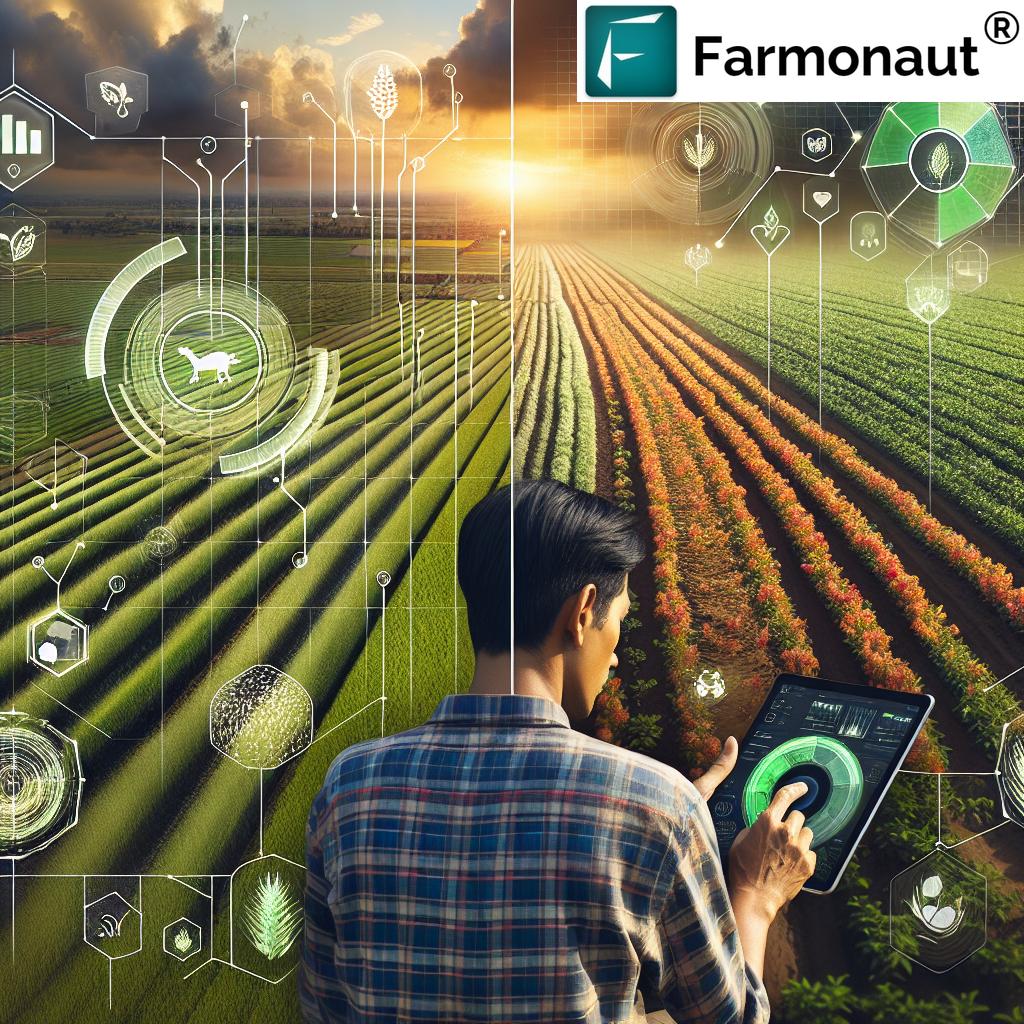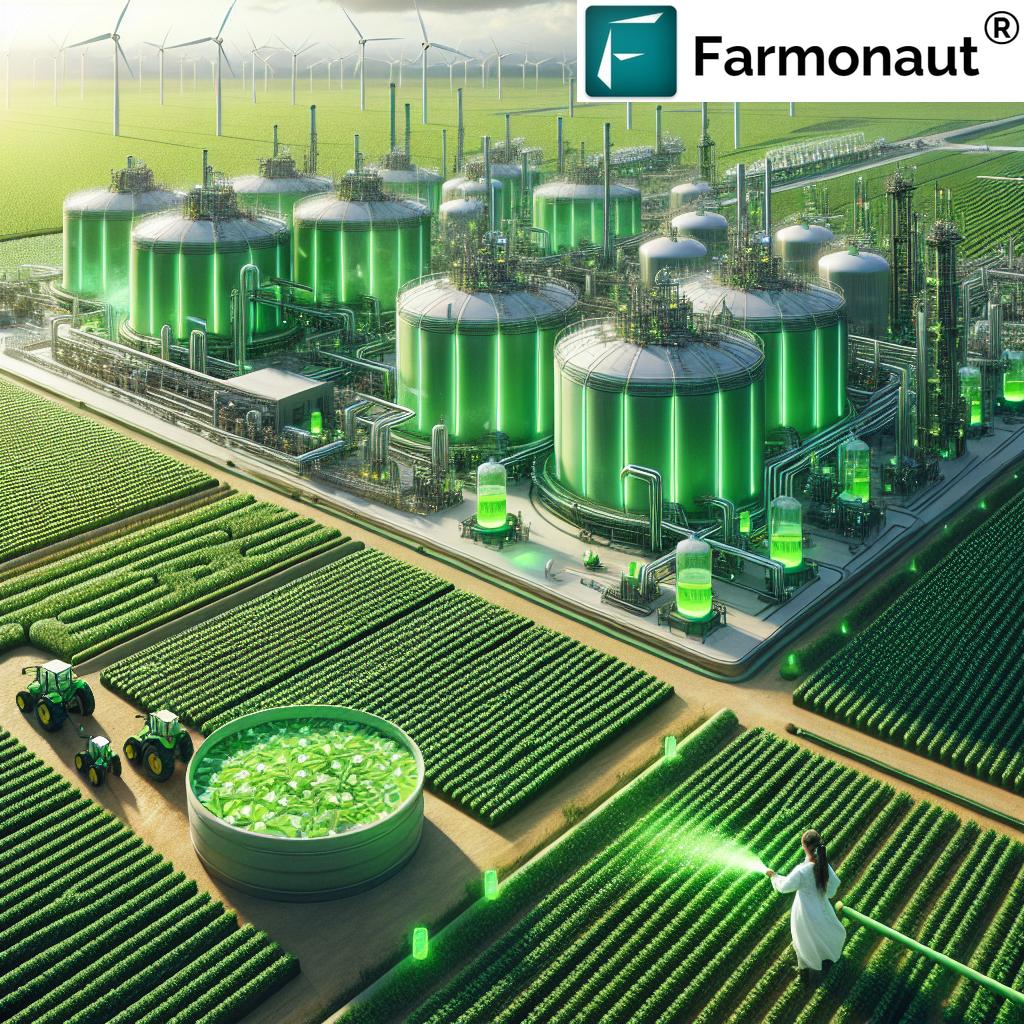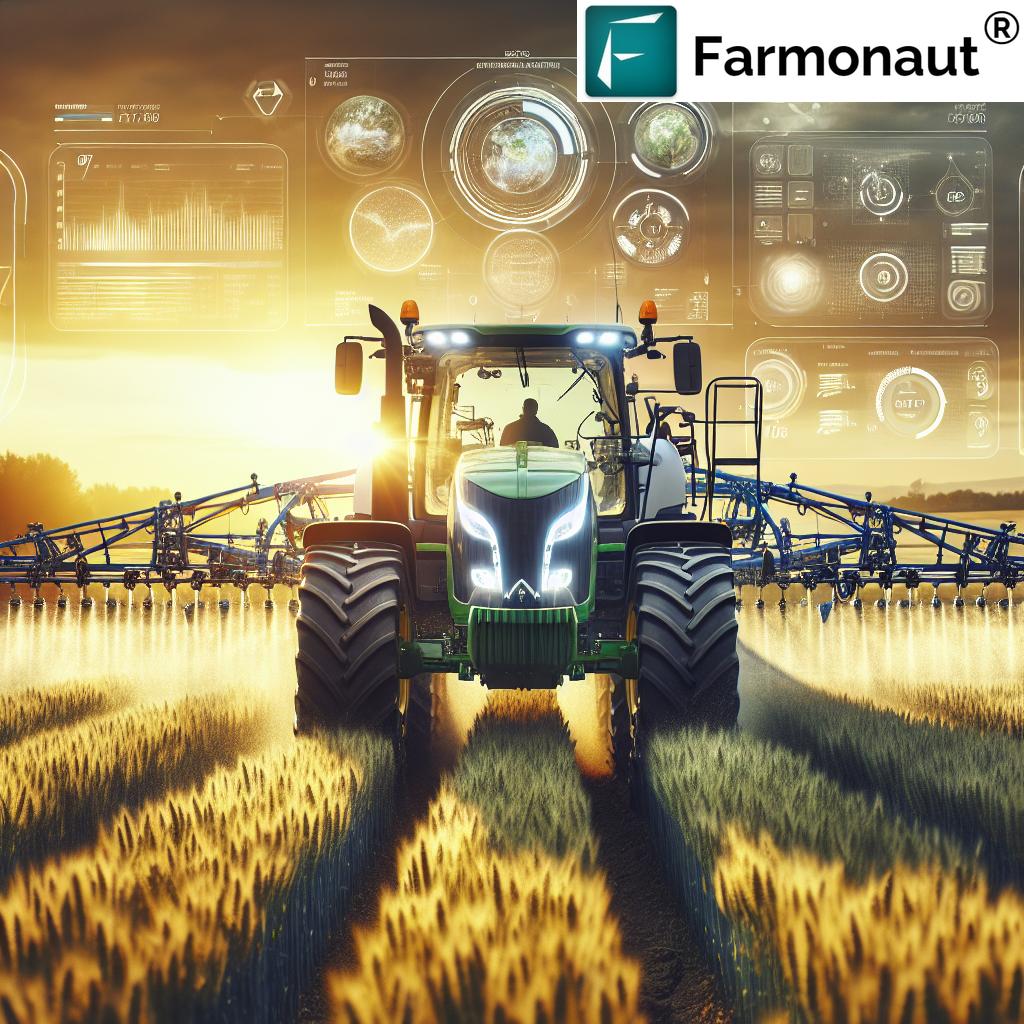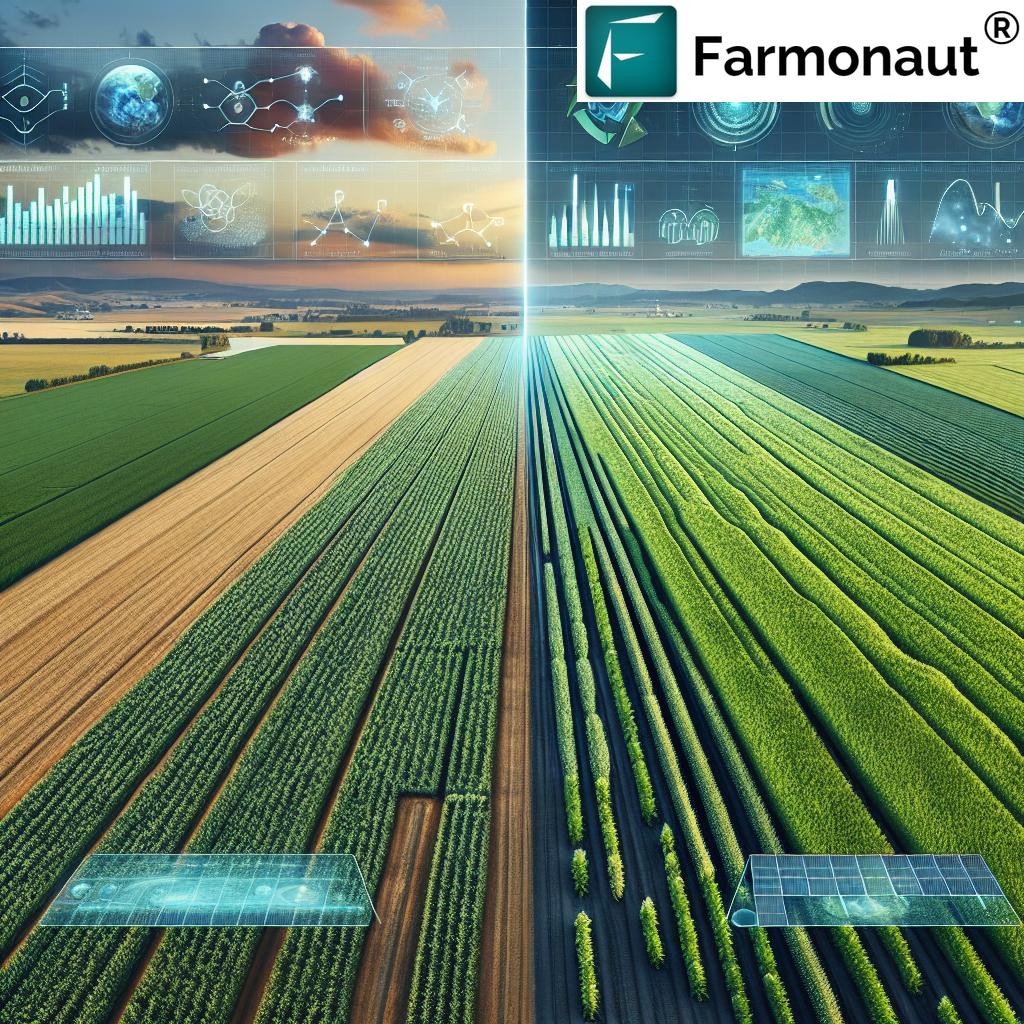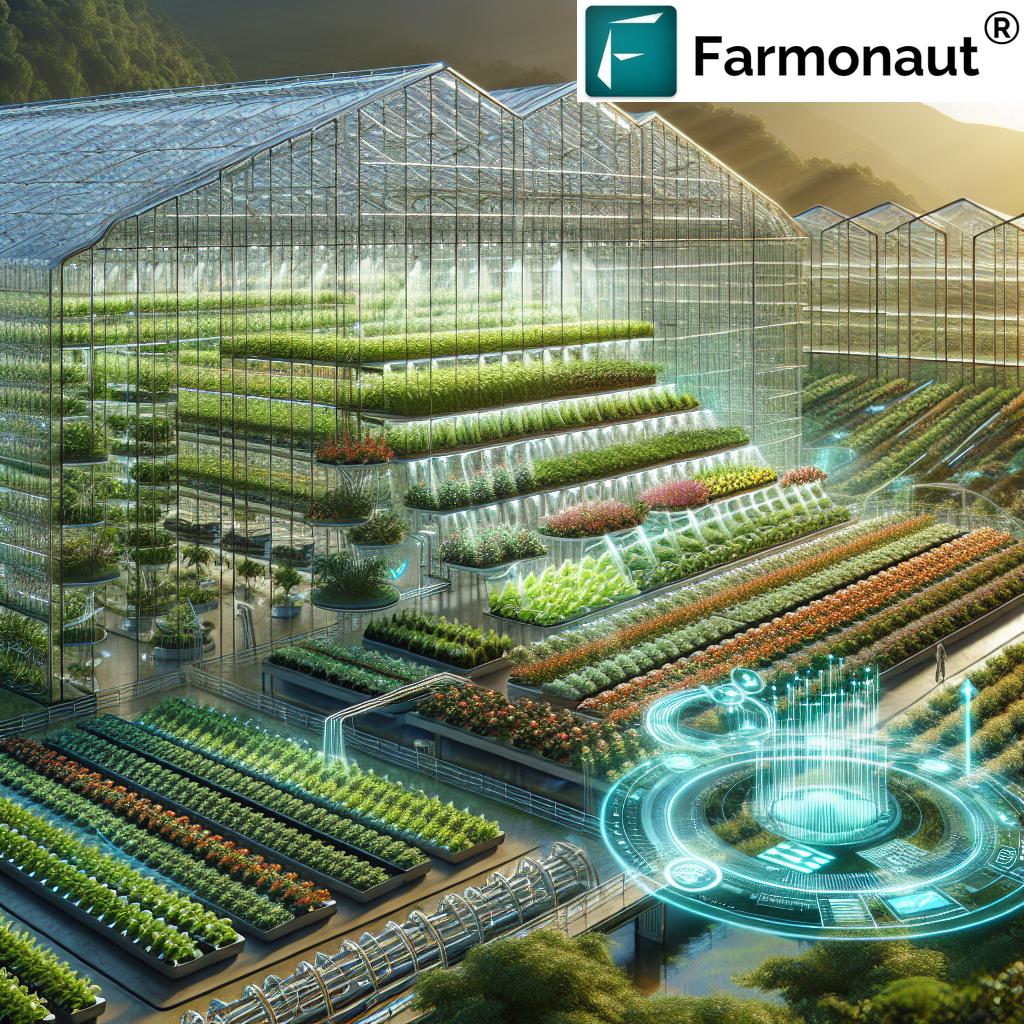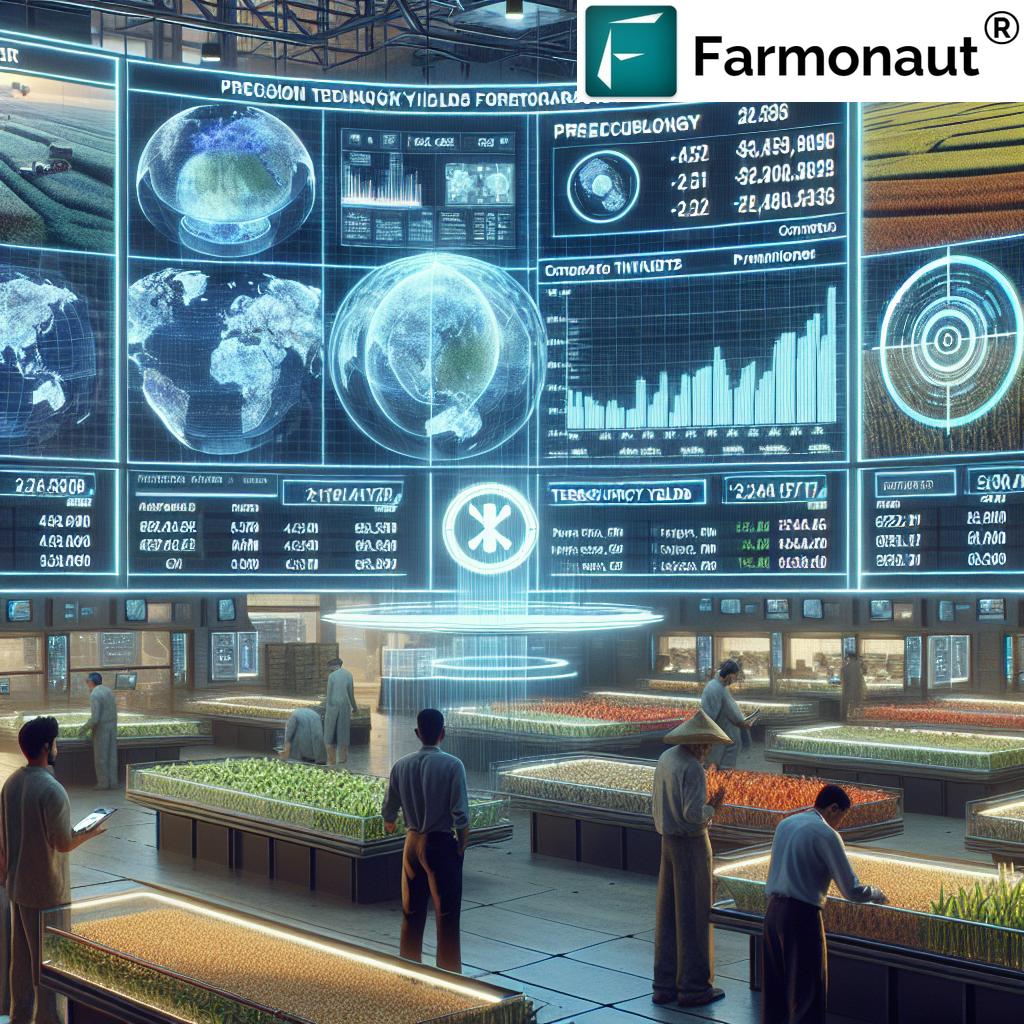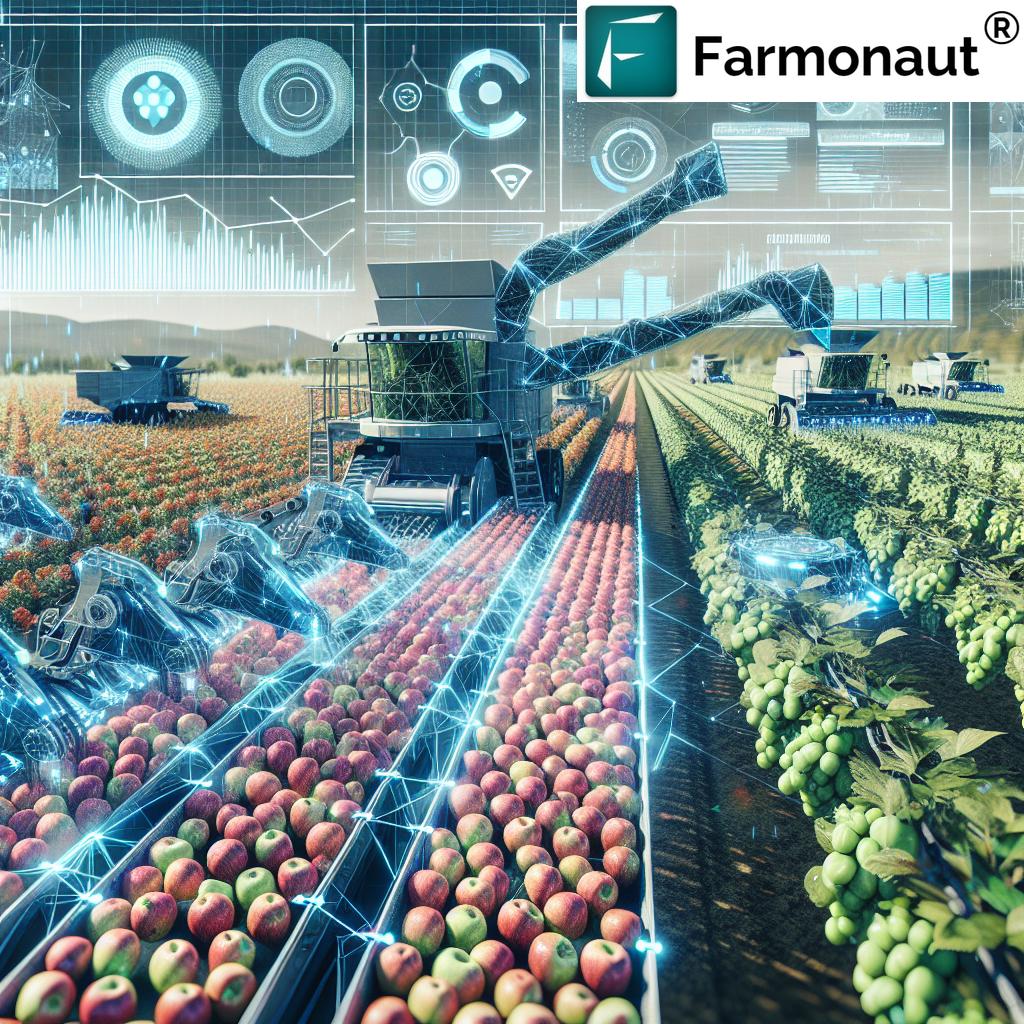High Tech Greenhouse Project: 7 Shocking Benefits That Are Revolutionizing Agriculture
“High-tech greenhouses can boost crop yields by up to 30% compared to traditional farming methods.”
- Introduction: A New Era for Agriculture
- Main Components of High-Tech Greenhouses
- 7 Shocking Benefits of High-Tech Greenhouses
- Farmonaut: Driving Smart Greenhouse Solutions Globally
- Comparative Benefits Table
- Key Challenges and Considerations
- Future Prospects: What’s Next for High-Tech Greenhouse Projects?
- Conclusion
- FAQs
Introduction: A New Era for Agriculture
Over the past decade, agriculture has experienced an extraordinary transformation, powered by relentless technological advancements and the demand for more sustainable, efficient food production. High-tech greenhouses and AI-driven systems stand at the heart of this movement, offering radical solutions to some of the sector’s most pressing challenges—from climate change to urbanization and resource scarcity. Smart greenhouse solutions are not just modernizing traditional farming, but also integrating with innovations like automation, IoT, machine learning, and renewable energy sources to achieve optimal plant growth, minimized environmental impact, and record-setting crop yields.
In this comprehensive guide, we’ll explore how these advanced greenhouse technologies work, why high-tech projects are booming worldwide, and examine seven shocking benefits that can future-proof any agriculture, farming, or forestry operation. If you are ready to unlock the full potential of controlled environment agriculture, let’s dive in!
Main Components of High-Tech Greenhouses
To grasp the transformative benefits of high-tech greenhouse projects, we must understand their core components. These next-generation systems integrate a spectrum of technologies to create precisely controlled, energy-efficient environments that optimize both plant growth and resource management. Let’s break down the main building blocks:
1. Automated Climate Control Systems
Modern greenhouses feature automated systems that regulate temperature, humidity, and CO₂ levels. In Camarillo, California, the Ultra-Clima greenhouse stands as a compelling example: its closed, pressurized design ensures environmental parameters are always at their prime for maximal plant productivity. AI-driven algorithms, alongside robust sensor networks, dynamically adjust airflow, shading, and even the timing of irrigation, reducing energy consumption while sustaining ideal crop conditions.
2. Hydroponic and Aeroponic Systems
Hydroponic and aeroponic systems represent the backbone of soilless cultivation methods in high-tech greenhouses. By growing plants in mineral-rich water (hydroponics) or a nutrient-laden mist (aeroponics), we minimize water usage, enhance nutrient delivery, and virtually eliminate soil-borne diseases. As demonstrated in Mộc Châu, Vietnam, hydroponics accelerates produce quality and yield while reducing resource waste and growing cycles.
3. Internet of Things (IoT) Integration
With real-time data collection at the core, IoT integration equips smart greenhouses to continuously track environmental parameters like light, temperature, humidity, and nutrient concentrations. This setup empowers automated systems to deliver water, adjust lighting, and even dose fertilizers with surgical precision—optimizing plant growth and maximizing efficiency by reducing manual interventions.
4. Artificial Intelligence (AI) and Machine Learning
AI in greenhouse farming is revolutionizing controlled environments. By analyzing data from IoT sensors and external sources, AI platforms preempt plant needs and proactively adjust greenhouse parameters for optimal growth. Machine learning systems learn from historic data, continually improving the precision of automated interventions and resource usage. This has a direct impact on boosting productivity, crop quality, and environmental sustainability.
5. Robotics and Greenhouse Automation Systems
Today’s smart greenhouses incorporate a variety of robotic systems for tasks like sowing, transplantation, automated harvesting, pest management, and crop monitoring. These robots, often equipped with advanced vision and AI capabilities, handle both repetitive and high-accuracy operations—making large-scale, high-quality food production feasible with lower labor requirements.
6. Renewable Energy and Smart Energy Management
Leveraging solar panels and other renewable energy sources, energy-efficient greenhouses slash operational costs and environmental impact. The use of photovoltaic cells, wind turbines, or geothermal energy for heating, cooling, and lighting is increasingly common, especially in locations with rising electricity costs or strict sustainability targets—such as Camarillo, California.
7. Next-Generation Materials and Design
Advances in materials science have unlocked greenhouse structures that are lighter, more durable, and thermally efficient, including self-cooling glass, double-glazed panels, and biodegradable plastics. These innovations further improve insulation, light penetration, and climate control, enhancing the resource profile and lifespan of greenhouse projects.
7 Shocking Benefits of High-Tech Greenhouses
The transition to high-tech greenhouses reshapes every aspect of food production—from efficiency to sustainability—by providing year-round optimal growth conditions. Let’s explore these seven benefits in detail:
1. Dramatic Yield Increases
Modern controlled environments can increase crop yields by 30–40% compared to open-field or traditional greenhouse farming. By maintaining ideal temperature, humidity, and CO₂ levels year-round, plants experience less stress and more consistent growth. With AI-powered environmental control and nutrient delivery systems, even delicate crops thrive, supporting global food security.
- Constant, predictable production cycles unaffected by climatic variations
- Ability to grow high-value or specialty crops regardless of outside climate
- Seamless integration with vertical farming (more yield per square meter)
2. Radical Resource Efficiency (Water & Nutrient Optimization)
Hydroponic and aeroponic systems can reduce water usage by 50–90% compared to soil-based agriculture.
This is achieved through sensor-driven automation, closed-loop recirculation, and near-zero runoff.
Nutrient usage also becomes highly efficient, delivered directly to root systems at precise concentrations, cutting waste and operational costs.
- Conserves scarce fresh water resources
- Prevents nutrient leaching and groundwater contamination
- Reduces fertilizer input, cutting costs and environmental impact
3. Sustainability & Environmental Stewardship
Sustainable greenhouse technology incorporates renewable energy sources, automated pest management (reducing chemical use), and carbon tracking.
By using solar panels and ultra-efficient heating/cooling systems, high-tech greenhouses move towards net-zero energy or even energy-positive operations.
Materials science innovations—like biodegradable plastics and next-gen glass—support long-term environmental goals.
- Low-to-zero carbon footprint for greenhouse operations
- Minimizes soil degradation and habitat disturbance versus open-field farming
- Efficient carbon footprint monitoring and reduction contribute to global climate solutions
“AI-driven greenhouse systems reduce water usage by nearly 50% while maintaining optimal plant growth conditions.”
4. Enhanced Productivity and Year-Round Crop Quality
With complete control over light, nutrient, and climate parameters, high-tech greenhouses foster faster, healthier plants—often supporting multiple generations of crops per year.
Consistent, high-quality crop production means better pricing, less seasonality, and reduced waste—factors critical for commercial farmers and food processors.
- Reliable supply for markets and processors
- Reduced post-harvest losses due to uniformity and protection from the elements
- Ability to grow crops locally, reducing transport distance and associated energy consumption
5. Pest and Disease Management Without Heavy Chemicals
The physical barriers and controlled conditions of high-tech greenhouses suppress infestations and diseases, slashing the need for insecticides and fungicides. AI and machine-learning algorithms can detect pest threats in real time, prescribing targeted interventions and enabling integrated pest management—improving both environmental impact and end-crop safety.
- Prevents pests and pathogens from entering or spreading
- Automated camera systems and sensors identify visual signs of disease or stress
- Reduces chemical residue, supporting organic and health-focused food economics
6. Major Labor Saving Through Advanced Automation
Robotic harvesting, seeding, weeding, and data collection streamline operations and can offset the global challenge of agricultural labor shortages. For remote or urban farms, automation reduces overhead, improves working conditions, and enables 24/7 operations—key for large-scale, energy-efficient greenhouses.
- Significantly reduced reliance on seasonal or unskilled labor
- Ability to operate with a minimal human touch, essential during disease outbreaks or pandemics
- Data-driven decision-making improves precision and consistency
7. Market Differentiation and Traceability
Advanced traceability solutions (such as those available through Farmonaut) provide secure, transparent product data from seed to sale. For both local and global food supply chains, this is crucial for consumer trust and compliance.
- Blockchain-based tracking combats counterfeiting and food fraud
- Enhances brand value and gives producers a premium product story
- Streamlines certification (organic, fair trade, carbon-neutral)
Farmonaut: Driving Smart Greenhouse Solutions Globally
At Farmonaut, we recognize the immense potential of high-tech greenhouses and strive to empower farmers and agribusinesses worldwide through advanced, precision agricultural technology. Here’s how our innovations complement the global shift toward energy-efficient, sustainable, and data-driven controlled environment agriculture:
- Satellite-Based Crop Health Monitoring: Our platform delivers multispectral imagery for real-time insight into vegetation health, soil moisture, and other critical markers—enabling timely interventions to optimize crop yields and reduce resource usage.
- AI & Machine Learning Advisory: The Jeevn AI system distills satellite data and weather forecasts into personalized, actionable advice for farmers, vastly improving productivity and resource efficiency.
- Blockchain-Based Product Traceability: We enable secure, end-to-end supply chain visibility—essential for modern greenhouse operations and consumer trust.
- Resource & Fleet Management: By managing farm machinery and logistics, we help agribusinesses reduce operational costs and boost efficiency—a perfect match for automated greenhouse logistics.
- Carbon Footprinting: Environmental stewardship is at the core of sustainable greenhouse technology. We help track, analyze, and reduce carbon emissions, dovetailing with the sustainability goals of our greenhouse clients.
Whether you’re a smallholder farmer, a large agribusiness, or a government agency, Farmonaut’s modular, scalable solutions—accessible via web and mobile apps—support every phase of the greenhouse lifecycle: from planning and planting to monitoring and market reporting.
Ready to experience the future?



API for Developers: For those seeking to integrate smart greenhouse solutions with their own platforms or research apps, Farmonaut provides API access with complete developer documentation (read docs).
Other Solutions:
- For robust carbon tracking, learn more about our Carbon Footprinting service.
- Transparent farm-to-market traceability? Check Product Traceability.
- Cut labor, fuel, and maintenance costs with our Fleet Management platform.
- Larger scale needs? Explore our Large Scale Farm Management tools.
- Comprehensive crop, plantation, and forest advisory? Get started with our AI-powered advisory.
- Securing loans or insurance using satellite verification? Visit Crop Loan & Insurance Support.
Comparative Benefits Table: High-Tech vs. Traditional Greenhouses
| Benefit | High-Tech Greenhouse (Estimated Value) |
Traditional Greenhouse (Estimated Value) |
Impact on Agriculture |
|---|---|---|---|
| Yield Increase | Up to 40% higher yield | Standard yield | Supports global food production, enhances profitability |
| Water Savings | 50–90% reduction | 5–15% reduction | Ensures efficient use in water-scarce regions |
| Labor Reduction | Up to 70% less labor | Manual-intensive | Lowers operating costs and enables scalability |
| Energy Efficiency | 30–50% less consumption | Higher consumption | Promotes sustainability and cost-savings |
| Pest Control Improvement | 95% reduction in chemical use | High reliance on chemicals | Better crop quality and safety |
| Sustainability | Low/Net-zero carbon footprint | Moderate–High footprint | Aligns with climate goals and eco-conscious trends |
| Crop Quality | Consistent, high-grade | Variable, weather-dependent | Improves marketability and end-user trust |
Analysis based on industry estimates and global reported averages for advanced, climate-controlled greenhouse operations.
Key Challenges and Considerations in High-Tech Greenhouse Projects
While high-tech greenhouses are reshaping the landscape of agriculture and forestry, success requires careful planning, investment, and ongoing technical adaptation. We must actively address and strategize around the following challenges:
High Initial Capital Investment
Installing advanced greenhouse infrastructure—complete with automation, IoT, AI, climate control, and renewable energy systems—demands a significant upfront financial commitment. This can be a hurdle, especially for small or medium-sized operations. Smart financing, phased deployment, and government incentives are recommended to ease the capital burden.
Technical Complexity and Training
High-tech greenhouses require skilled operators, from agronomists and engineers to data analysts. Ensuring ongoing training and access to tech support is crucial. Many innovative platforms, like Farmonaut, help bridge the knowledge gap by offering user-friendly tools and dashboards.
Energy Consumption and Balancing Renewable Sources
Even with advances in energy-efficient materials and design, electricity (especially for artificial lighting and HVAC) can account for a large portion of operational costs. Prioritizing integration with solar, wind, or geothermal sources, and investing in energy storage, can help achieve true sustainable greenhouse technology.
Market Competition and Operational Costs
As greenhouse technology becomes more accessible globally, producers must focus on product differentiation (quality, certifications, traceability) and cost-effective management to sustain a market edge. Automated data-driven tools, like those provided by Farmonaut’s fleet management and large scale management solutions, can be invaluable in this context.
Future Prospects: What’s Next for High-Tech Greenhouse Projects?
As we look ahead, high-tech greenhouses continue to evolve rapidly, with several key trends shaping the future of controlled environment agriculture:
- Vertical Farming Integration: Combining vertical farming with greenhouse environments unlocks unprecedented yields per unit of land, especially valuable in urban areas experiencing rapid urbanization.
- Next-Generation Materials: The rise of self-cooling glass and degradable plastics will further reduce environmental impact and improve energy efficiency.
- Advanced Automation: The growing role of drones and automated surveillance accelerates crop monitoring, timely interventions, and precise input delivery—even in large-scale projects.
- Sustainable Practices: New crop varieties and eco-friendly methods, plus automated resource management (water, electricity, nutrients) push greenhouses towards net-carbon-neutrality and global climate stewardship.
- AI-Driven Decision-Making: Machine learning will refine predictive modeling, enabling greenhouses to anticipate environmental fluctuations and optimize operational costs in real time.
- Enhanced Data Integration: Full IoT connectivity—sampling everything from air CO₂ to leaf temperature—will make every greenhouse function as a living ecosystem laboratory, powering the next wave of agri-innovation.
The adoption of Farmonaut’s app-based solutions is set to accelerate and de-risk this transition. With features like satellite-based monitoring, blockchain traceability, and advisory automation, greenhouse farmers can elevate their productivity while maintaining a sharp focus on sustainability and transparency.
Farmonaut Subscriptions: Affordable Smart Agriculture at Scale
Ready to access affordable, large-scale satellite crop monitoring and AI-driven farm advisory? Choose your best-fit subscription—trusted by professionals across agriculture, forestry, and more!
Conclusion: Transforming Agriculture with High-Tech Greenhouses
High-tech greenhouses present an inspiring solution to the challenges posed by climate change, increasing food demand, and the imperative for sustainable, low-impact agriculture. Through the integration of AI, IoT, smart automation, and eco-friendly energy systems, these projects deliver:
- Record-setting increases in yields and productivity
- Vastly improved water, energy, and resource efficiency
- Sustainable, year-round cultivation—even in extreme conditions
- Data-driven, low-labor, scalable operations
- Traceable crop production that builds trust and market advantage
At Farmonaut, we continue to reduce the barriers to this technological revolution—making precision agriculture, sustainable greenhouse technology, and future-ready solutions accessible for every farmer, agribusiness, government, and industry leader. Whether through our web and mobile apps, powerful APIs, or blockchain-driven traceability and carbon footprinting solutions, we are proud to be accelerating agriculture’s transformation for a healthier, more sustainable planet.
For those seeking the next step in maximizing production, reducing waste, and achieving global food and environmental security, there has never been a better moment to explore high-tech greenhouse projects.
Frequently Asked Questions (FAQs) on High-Tech Greenhouse Projects
1. What is a high-tech greenhouse?
A high-tech greenhouse is a highly automated, controlled environment system for optimal plant growth, leveraging automation, AI, IoT, advanced climate control, hydroponic or aeroponic methods, and renewable energy sources to maximize yields and sustainability.
2. How does AI contribute to smart greenhouse solutions?
AI in greenhouse farming analyzes real-time data from sensors and environmental factors to optimize lighting, irrigation, nutrient delivery, and pest management. This leads to higher efficiency, fewer resource inputs, and healthier crops.
3. What are the most important components of a high-tech greenhouse?
Key components include automated climate control systems, hydroponic/aeroponic systems, IoT-enabled monitoring, AI and machine learning, robotics, renewable energy integrations like solar panels, and advanced building materials.
4. How do high-tech greenhouses support sustainability?
Through efficient resource use (water, nutrients, and energy), reduced chemical inputs, and integration of renewable energy, high-tech greenhouses lower their environmental footprint and align with climate and sustainability goals.
5. Are high-tech greenhouses expensive to operate?
While initial setup costs are higher due to advanced technologies, operational costs are often lower in the long run thanks to labor savings, resource efficiency, and higher yields. Many also qualify for sustainability or tech incentives.
6. What are the applications of Farmonaut’s technology in high-tech greenhouses?
Farmonaut offers value through satellite crop health monitoring, AI advisory for precision farming, resource tracking, blockchain-based product traceability, and environmental (carbon) footprint assessment, all accessible via app or API for seamless modern agriculture management.
7. How do high-tech greenhouses affect food quality and safety?
The controlled environment, advanced disease management, and traceability options in high-tech greenhouses yield better, safer, and more consistent food—meeting stringent health and consumer standards.
8. Where can I find more information or get started with Farmonaut?
Visit the Farmonaut web app to explore all features, download our mobile apps, or access our API and developer docs for integration.


